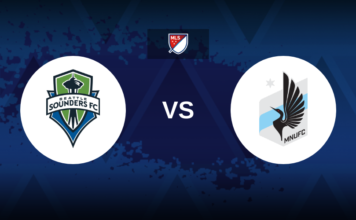The BTTS method is, as the name suggests, simple to use and offers bettors several intricacies to provide a unique experience.
To begin with, what is BTTS? It is a shortened form of a phrase used in football betting which stands for ‘Both Teams To Score’. In this type of bet, punters can wager on whether both teams in a game will score or not.
You normally select between two options for this market – BTTS: Yes or BTTS: No.
If both teams scored and you selected BTTS: Yes, then you’ll win your bet. It doesn’t matter who wins, how many goals there were, or if the match ended in a draw, you still claim your winnings. If only one side scored, however, you lose the bet.
The same premise applies to the BTTS: No, but in the opposite way. In this instance, if you select this option and both teams fail to score, you win the bet. But if both of them score even just one goal, then you lose.
This form of betting is one of the most popular and unique ones in football. BTTS not only offers good value, but it gives punters the chance to combine it with other markets such as Match Result or Over/Under wager.
Common BTTS variants
BTTS: This is the original, simplest, and most common variant to choose from. The bettor simply picks between ‘Yes’ and ‘No’ on whether both teams will score in a selected match.
First-half BTTS: This bet is settled on the scoreline at the half-time whistle. It includes all 45 minutes of the first half and any injury-time minutes added by the referee. What makes this BTTS bet more attractive is the considerably bigger earnings gained from one-half compared to a full 90-minute one.
Second-half BTTS: While similar to the previous one, this BTTS is settled on the second-half scoreline instead. The goals scored in the first period count for nothing. For example, two teams are tied 1-1 at half-time but the final score finishes at 2-1. Just one team, therefore, scored in the second half, meaning BTTS: ‘No’ would’ve been the right bet as both sides didn’t score.
BTTS in Both Halves: Probably one of the most daring yet rewarding variants is the Both Halves. As the name suggests, both teams must score or not score in both the first and second half, depending on whether the punter has selected a ‘Yes’ or ‘No’ bet.
BTTS and Over/Under: Combining BTTS with the Over/Under market can be a fruitful experience. It takes into account whether both teams scored (BTTS) and the number of combined goals (Over/Under) in the match itself.
BTTS and Win: This is another attractive and tricky variant. The punter must predict whether both teams will score (BTTS) and also decide the match outcome (Win).
Do extra-time goals count in BTTS?
No, they don’t. BTTS only applies for the 90 minutes and injury time added for a match no matter the competition.
How to decide on a good bet?
The BTTS market is straightforward and can offer huge returns if used carefully. You must develop a strategy for long-term gains, ideally one that involves studying the form of both teams before the match. You could take into account the following things:
- Team results in the last five or more games.
- The number of goals scored in the most recent fixtures.
- Clean sheet record.
- Head-to-head record.
- Any injuries? If one team loses their top scorer to injury, for example, their chances of scoring will decrease.
- Squad changes like new players or a managerial change.
It’s worth noting there is no foolproof way of telling if both teams will score, though. All we can do is urge you to adopt a sound strategy or, as a last resort, subscribe to a professional football tipster to consult a variety of tips.
For all the latest live scores and upcoming football matches, visit this link here on Ace Football.







